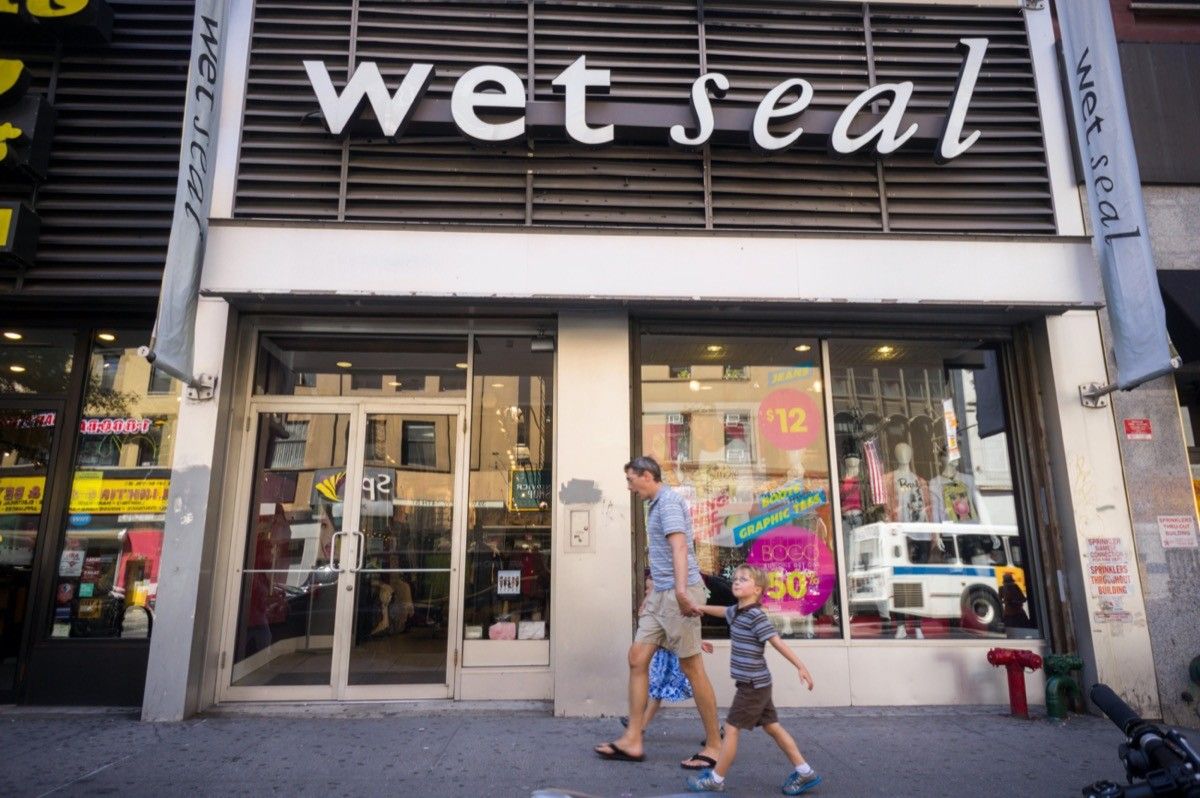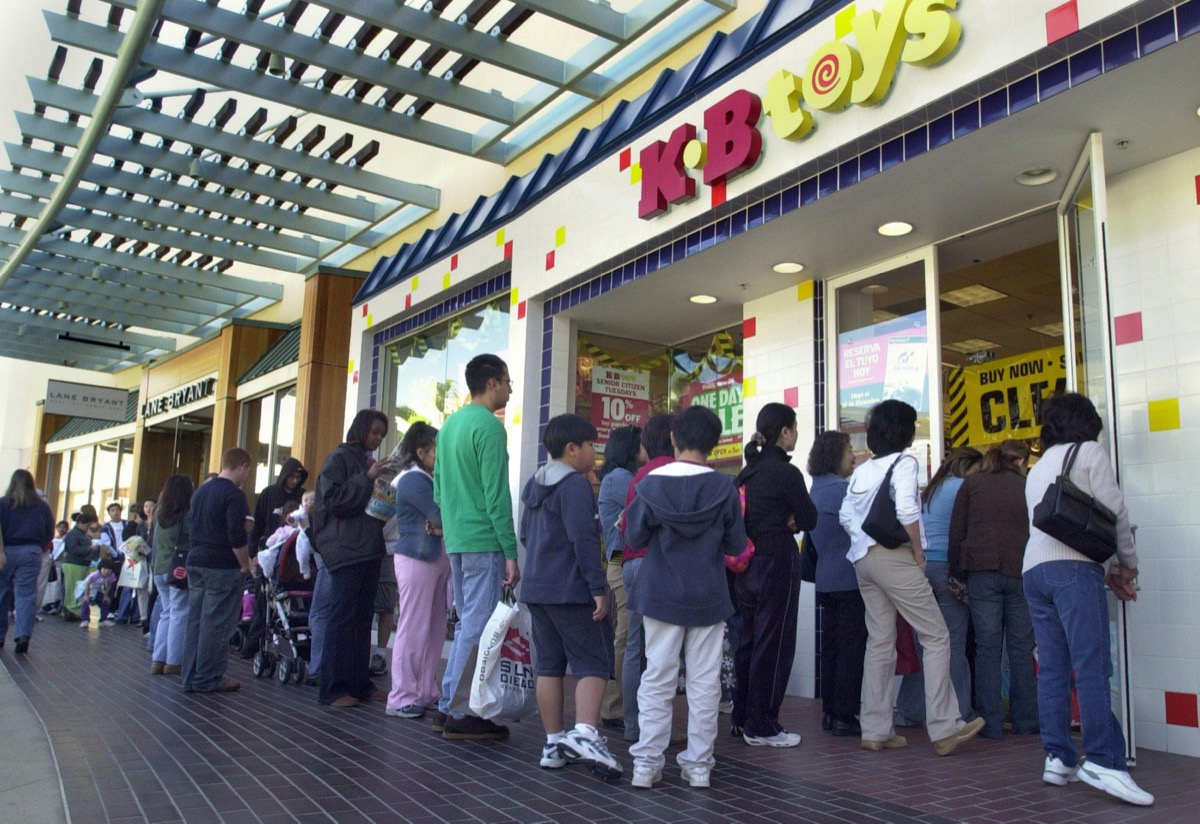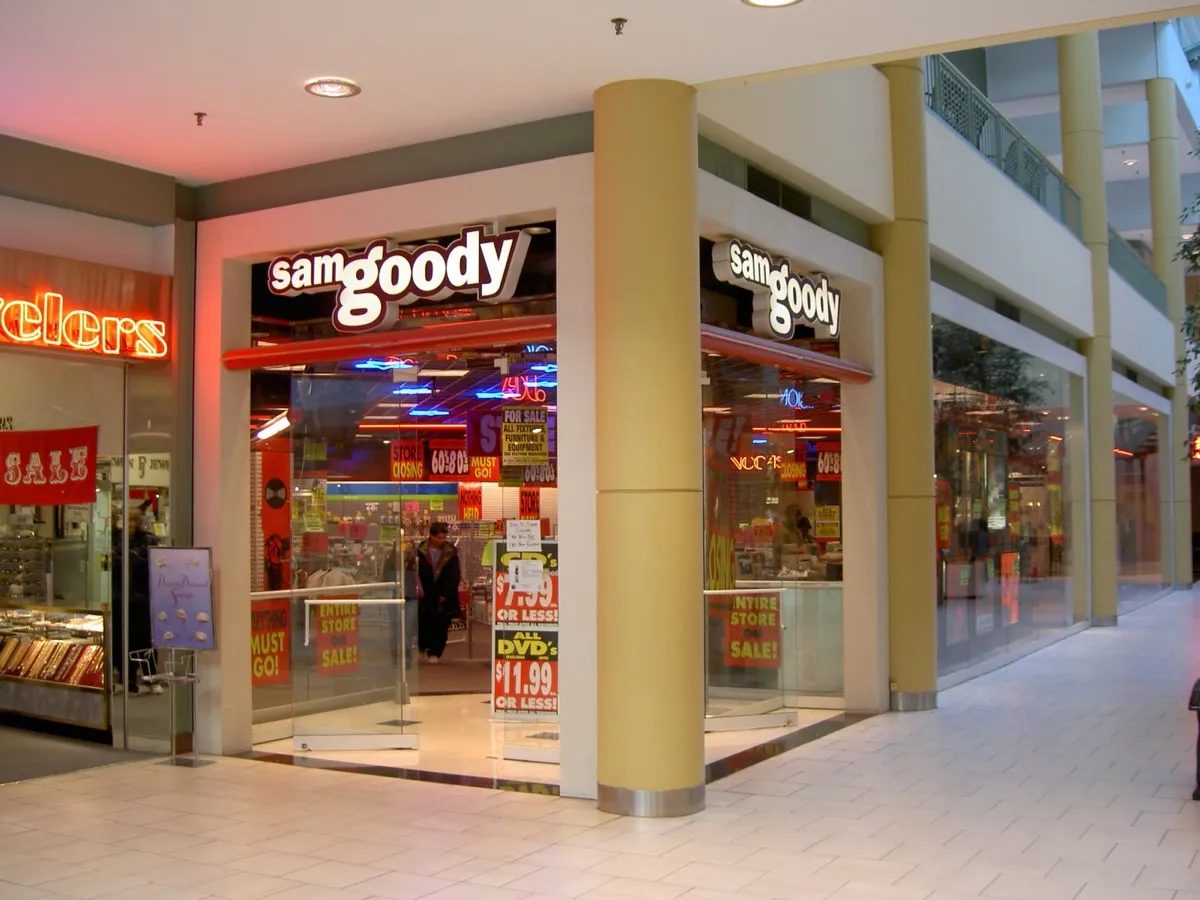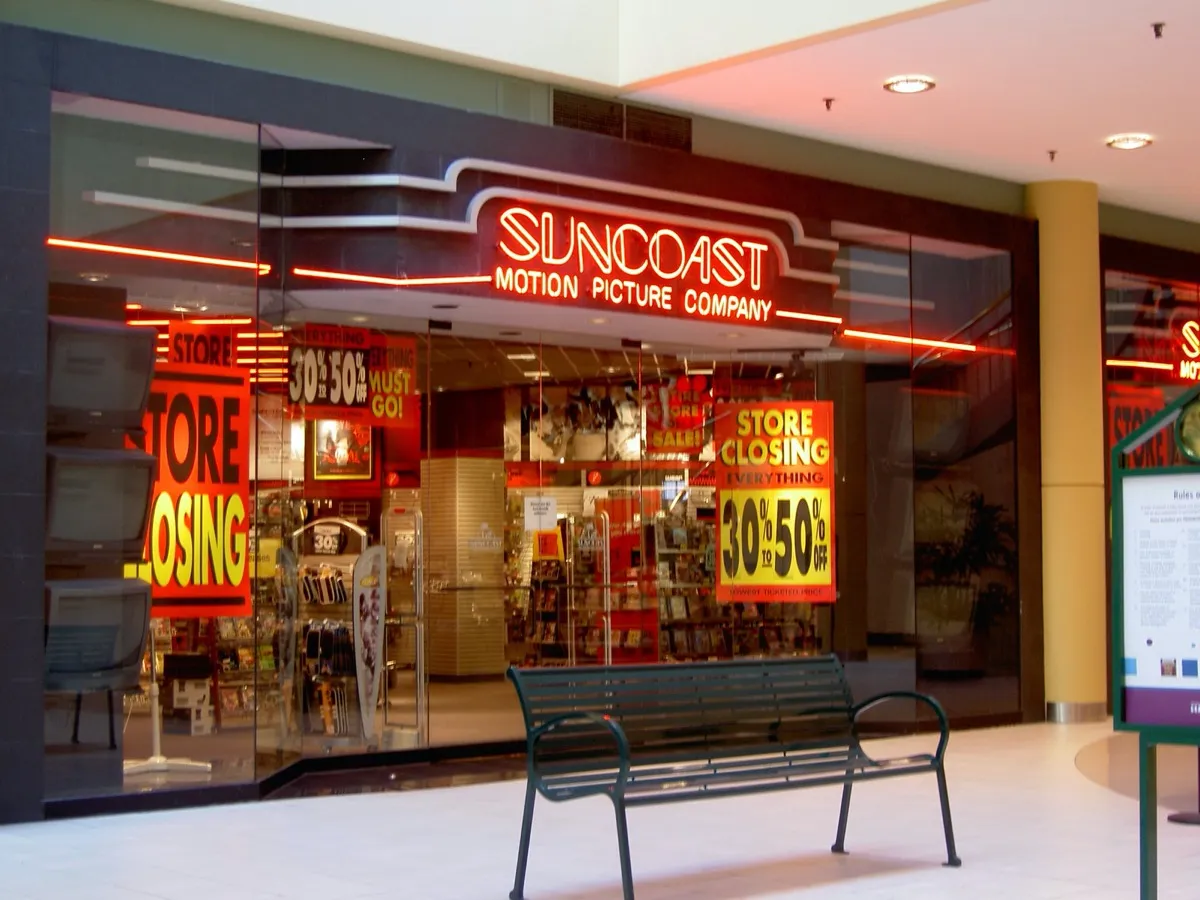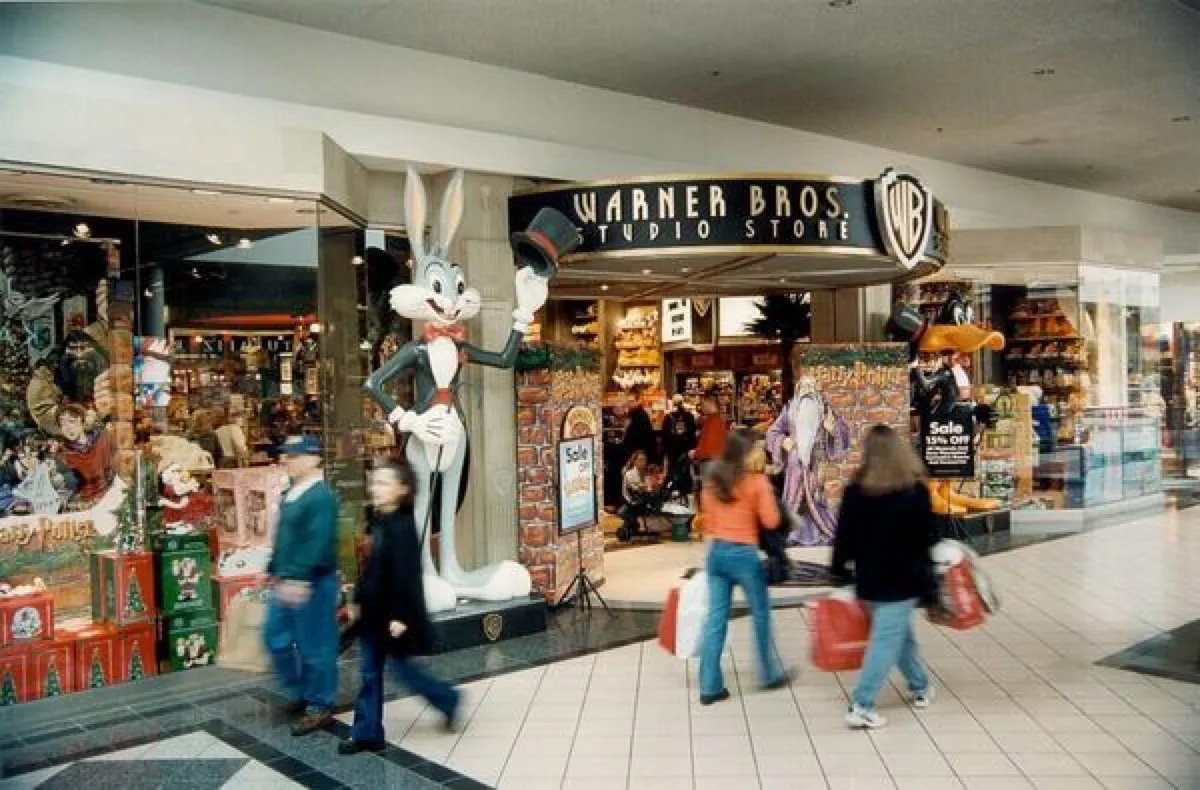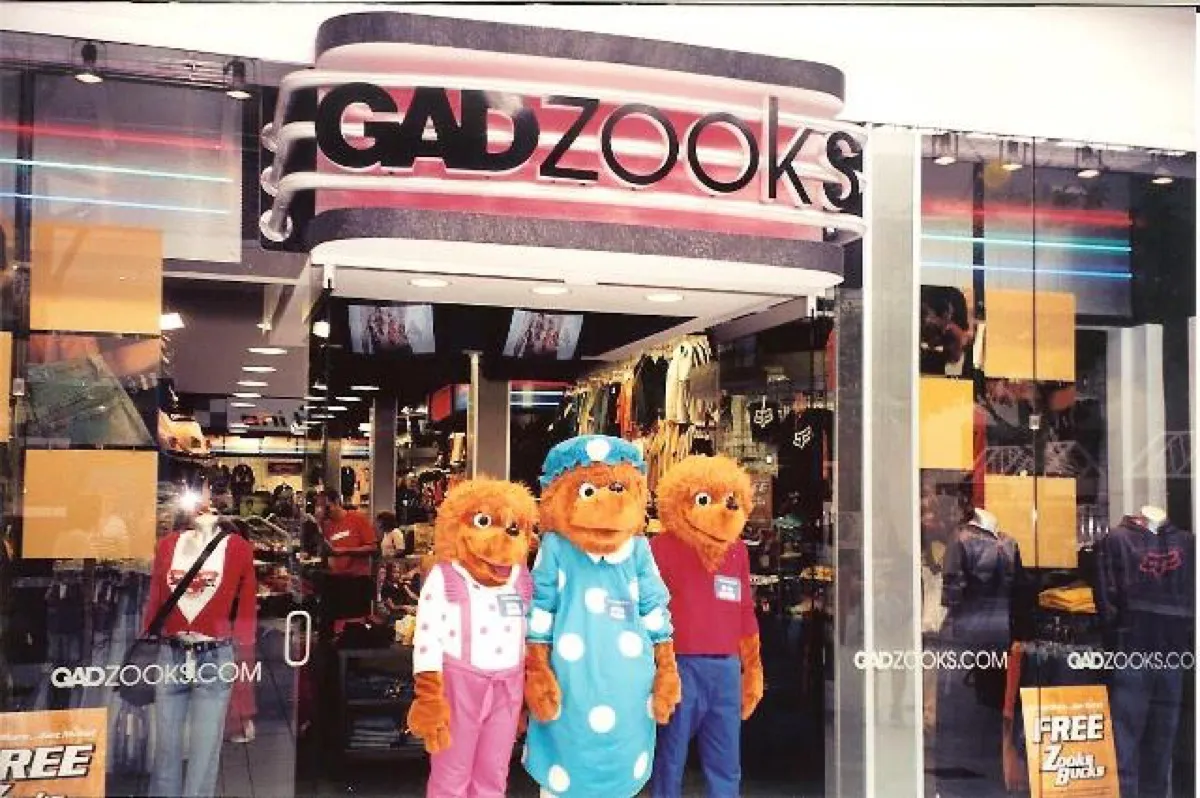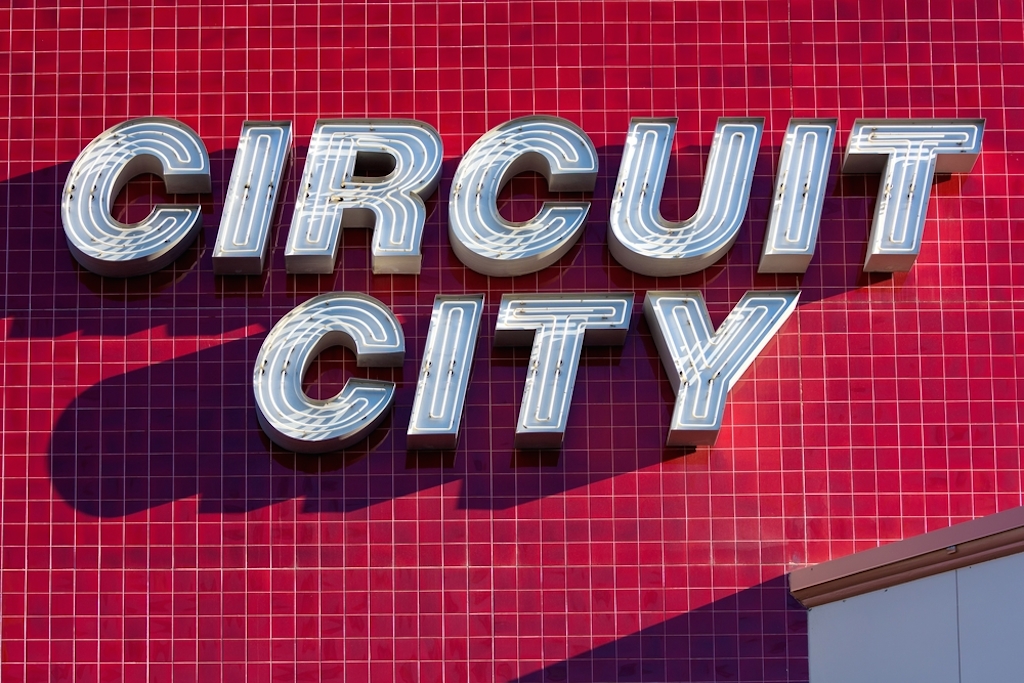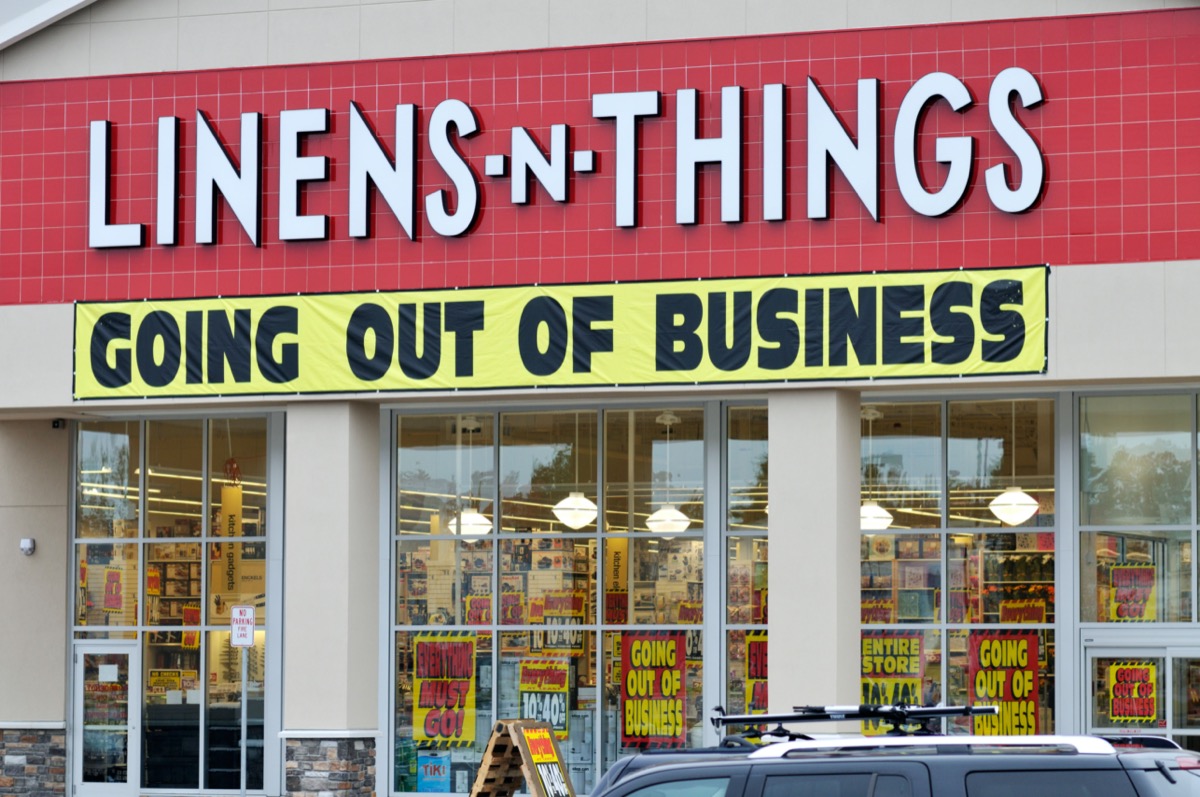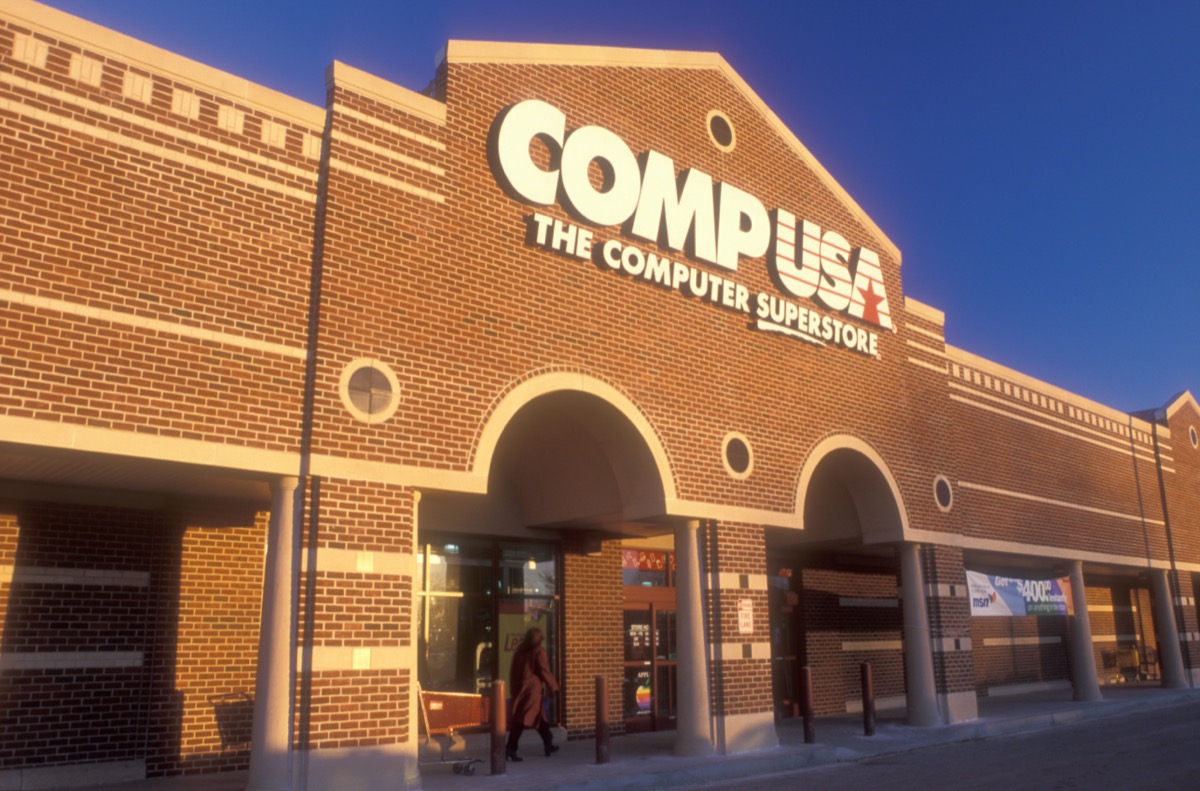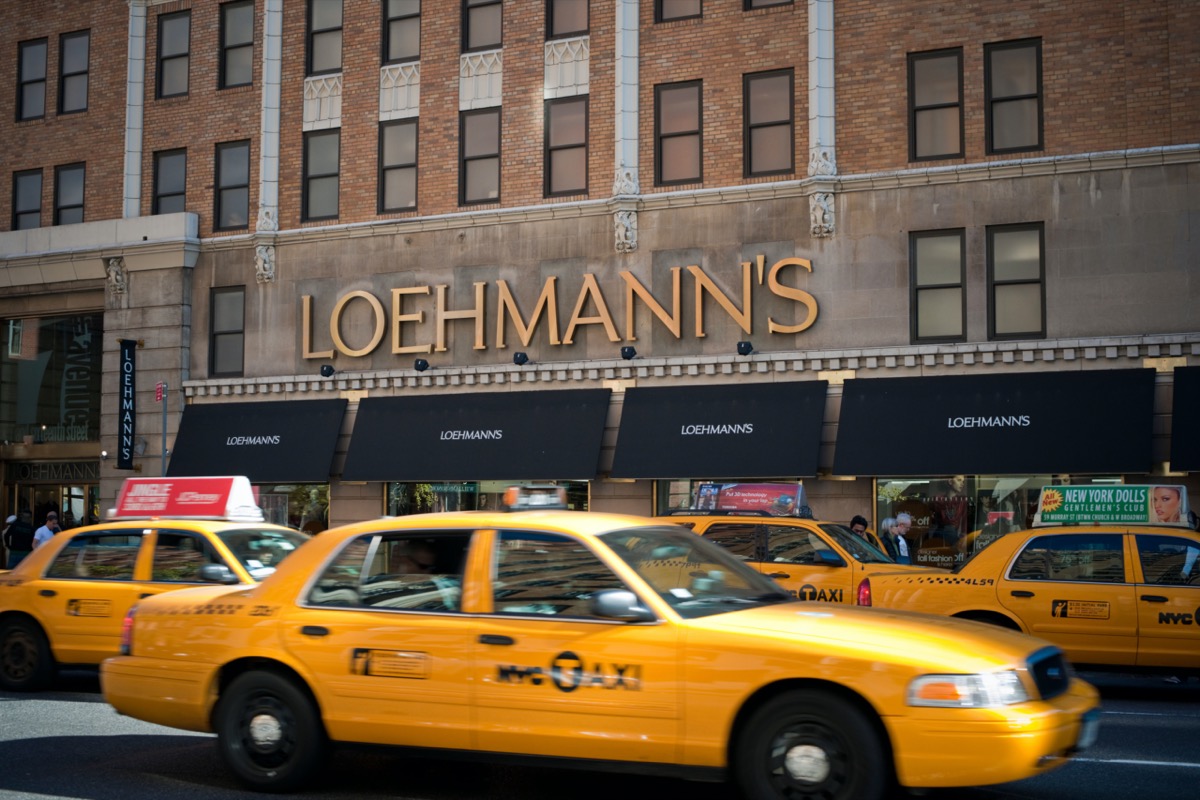But teenagers these days probably can’t relate. With e-commerce taking over everything, running a brick-and-mortal business—especially on a large scale—has become more challenging than ever. And due to the pandemic, a staggering number of beloved stores are closing for good. Unfortunately, legendary 1990s stores are disappearing on a daily basis, including the mall staples teens frequented decades ago. Even formerly ubiquitous brands like Borders and Toys “R” Us couldn’t keep up. So, it’s time to take a trip down memory lane and reminisce about all of the 1990s stores that are no longer with us. May they rest in peace with our original Game Boys. And for more outlets that are disappearing, This Popular Clothing Chain Just Announced It’s Closing 250 Stores. Wet Seal was the place for all the trendiest styles in the 1990s, from L.E.I. and Mudd jeans to lingerie-style camisoles. But between fierce competition from similar brands and lawsuits with pricey payouts, the company hemorrhaged cash quickly in the 2010s. By 2015, it was forced to file for bankruptcy, and by the end of 2017, all of Wet Seal’s brick-and-mortar stores had closed. Today, the only remnants of Wet Seal are an online store and the occasional pair of jeans at a thrift store. And for more retail chains that are saying goodbye, This 132-Year-Old Beloved Department Store Could Be Doomed. Barnes & Noble wasn’t always the only giant bookseller in town. Once upon a time in the ’90s, kids were also hitting up their local Borders and Waldenbooks, both part of the Borders Group, Inc. Whether they needed a summer reading book or were on the hunt for a new CD, Borders was the place to do it, especially with the store’s free rewards plan. Sadly, the company liquidated all of its assets in 2011. And for more throwback memories, here are 25 Reasons Why Being a Kid in the ’90s Totally Ruled. As a kid in the ’90s, one of the best parts of going to the mall was stopping in the Sharper Image store and testing out all the massage chairs you knew you couldn’t afford. Unfortunately, though, this is a luxury that tweens and teens growing up now will never get to experience. In 2008, Sharper Image closed all of its retail stores and liquidated its remaining inventory, living on only via the internet. In the ’90s, little leaguers and local soccer stars didn’t go to Dick’s Sporting Goods for their equipment—they went to Sports Authority. For a long time, the store was the, well, authority in everything athletics. But in 2016, it was forced to file for bankruptcy, close its stores, and sell its brand name and intellectual property to Dick’s.ae0fcc31ae342fd3a1346ebb1f342fcb The Limited was once a favorite amongst working women and casual chicks alike with its mix-and-match suiting and closet staples. But the only remnants that remain of The Limited are cherished memories and the store’s online shop. After more than 50 years in business, the brand was forced to file for bankruptcy in early 2017 and close down all of its stores. And for the younger set, there was Limited Too, which launched in 1987. The store’s tween-centric inventory was so brightly colored and glittery, it could burn your retinas. But Limited Too’s success also began dwindling in the early 2000s. In 2008, all Limited Too stores were rebranded as Justice, which is still one of the top tween brands today. Limited Too’s five-petaled flower logo still lives on in our hearts. And for more places you won’t be able to shop at anymore, This Beloved Discount Store Is Closing All of Its Locations. This wound is still pretty fresh. From the late ’90s until spring 2019, affordable and youthful women’s fashion brand Charlotte Russe was a mall staple for the young professional by day and party girl by night. But in March 2019, it was announced that Charlotte Russe would be closing all of its stores. The company had filed for bankruptcy protection in the hopes of being bought out, but unfortunately Charlotte Russe ended up being sold in bankruptcy court to a liquidator, who decided to cut its losses. Our hearts were crushed, just like the velvet all over the store in the ’90s. Unfortunately, toy businesses haven’t had all that much luck in the 21st century. K.B. Toys was once the place to go for a Barbie Dream House or Super Soaker in the 1990s. But the company was forced to file for bankruptcy and eventually go out of business in 2009. There is a small sliver of hope, though: In 2016, Strategic Marks purchased what remains of K.B. Toys and recently announced that they would be opening stores under the old name. There’s nothing stronger than ’90s nostalgia, right? In the ’90s, every teenage girl had at least one graphic tee, halter top, or pair of platform shoes from Delia’s. Launched in 1993 by two Yale University alumni, Delia’s—which was famous for its catalog—quickly became synonymous with ’90s style and cropped up in malls across the country. Sadly, its parent company, Alloy Inc., filed for Chapter 11 bankruptcy protection in December 2014. All of Delia’s brick-and-mortar locations are now gone, but you can still find some of its signature merchandise for sale via the Dolls Kill website. And for more up-to-date information, sign up for our daily newsletter. Before Apple Music or Spotify, ’90s kids had to go to an actual store to buy music. And Sam Goody was the place to do it. Whether you were picking up the Space Jam soundtrack or a one-hit wonder’s single (sorry, Kris Kross), you knew to rush to your local Sam Goody on a Tuesday, when all new music would hit the shelves. After its parent company filed for Chapter 11 bankruptcy in 2006, all Sam Goody stores shuttered their doors—and the remaining ones became FYEs. But if you live near Medford, Oregon, you’re in luck: The town’s Rogue Valley Mall houses the last Sam Goody standing. Suncoast is basically the Sam Goody of movies. Before Netflix and On Demand services, you’d stock up on your favorite ’90s TV shows and movies at Suncoast (and some awesome anime, too). Whether it was Betamax, VHS, LaserDisc, DVD, or Blu-ray, Suncoast kept up with the ever-evolving technology of the ’80s and ’90s, until the pull of streaming took it under. By 2009, all Suncoast branches closed. The Warner Bros. Studio Store was basically just like the Disney Store but for WB brands. The key difference is that Warner Bros. ceased to exist as of 2001. The 1990s store was the best place to get all your Bugs Bunny gear, which was actually pretty fashionable during the last decade of the 20th century. The first WB retail store opened in 1991, but a decade later, that was all, folks! While Pacific Sunwear, or PacSun as it’s referred to now, has managed to stay afloat, a similar 1990s store, Gadzooks, didn’t have the same luck. The store, which catered to the alternative dressers of the ’90s, began as a Texas T-shirt retailer. As it grew throughout the 1990s, it was filled with JNCO jeans and chain wallets. But by 2003, the store switched its focus to women’s clothing and was eventually purchased by Forever 21. Gadzooks was phased out, but it has a place in ’90s kids’ hearts as big as the pants it carried. In 2017, children and adults alike received devastating news: After six decades of being the go-to toy store, Toys “R” Us and its affiliated brands were filing for Chapter 11 bankruptcy protection. By June 2018, all of the company’s British and American stores had closed. The brick-and-mortar toy market hasn’t been the same yet. However, there is hope! Just recently, former Toys “R” Us global chief merchandising officer Richard Barry announced that he would be spearheading a revival of the Toys “R” Us and Babies “R” Us brands under the new name Tru Kids. In 2019, Barry and his team plan to open some 70 stores globally. Hopefully, Geoffrey the Giraffe comes along for the ride. If your parents took you on an errand to a Circuit City store in the 1990s, you probably weren’t too upset. You’d get to peruse the music section and watch whatever was playing on the massive TV screens. But in late 2008, the company slowly started to lay off its workforce, eventually filing for bankruptcy in November. But, like many other stores on this list, it’s now an online retailer. Circuit City’s new site launched just before Black Friday in 2018. Bed Bath & Beyond may be the destination for home decor aficionados and upcoming college students today, but it had some competition in the 1990s with Linens ‘N Things. At one point, it had more than 600 stores across the U.S. and Canada, but it was hit hard by the sharp decline in the housing market in the 2000s. By the end of 2008, all Linens ‘N Things stores closed their doors. CompUSA probably brings up a lot of memories for 1990s kids. It may have been where you got your first laptop for college or even where you accompanied a parent to buy your first home desktop. With the rise of e-commerce and Apple’s reign over the computer world, the big-box retailer became obsolete, shutting down in the late 2000s. In October 2018, CompUSA came back from the dead as a deals aggregator site. But the website is certainly not going to stoke your nostalgia. For decades, when you wanted to do some serious shopping, you went to Filene’s. Founded by namesake William Filene in 1881, Filene’s is—or, sadly, was—a department store chain with a large presence in the Northeast region. Both Filene’s and its discount store Filene’s Basement passed through many hands over the years, but in 2006 the names were ultimately retired and replaced by Macy’s. What started as a single storefront in Brooklyn, New York, in 1921 quickly became one of the most well-known discount department stores in the United States. Savvy shoppers everywhere flocked to Loehmann’s for low-priced designer duds and on-sale shoes until late 2013, when the store filed for its third bankruptcy and could not recover. Every ’90s kid probably heard this joke: “Did you hear Stop & Shop is merging with A&P? It’s going to become Stop & P.” That merger was never a reality, and sadly, kids these days won’t even get the joke because A&P no longer exists. The Great Atlantic & Pacific Tea Company was once the largest grocery retailer in America up until the latter half of the 20th century. In fact, The Wall Street Journal called A&P the “Walmart before Walmart.” But the company was not able to keep up with the times, and in both 2010 and 2015 it filed for bankruptcy protection. By the end of 2015, all of the A&P stores across the country were gone. Before Netflix and Hulu, there was Blockbuster Video. In the 1990s and early 2000s, this was the place to go to rent video games and movies for sleepovers, playdates, and date nights. But streaming services, automated kiosks, and the like made stores like Blockbuster unnecessary, and in 2010, the company was forced to file for bankruptcy. As of March 2019, only one Blockbuster store in the world remains open and operating. And for more sad departures, This Beloved Department Store Just Announced It’s Closing All Locations.
